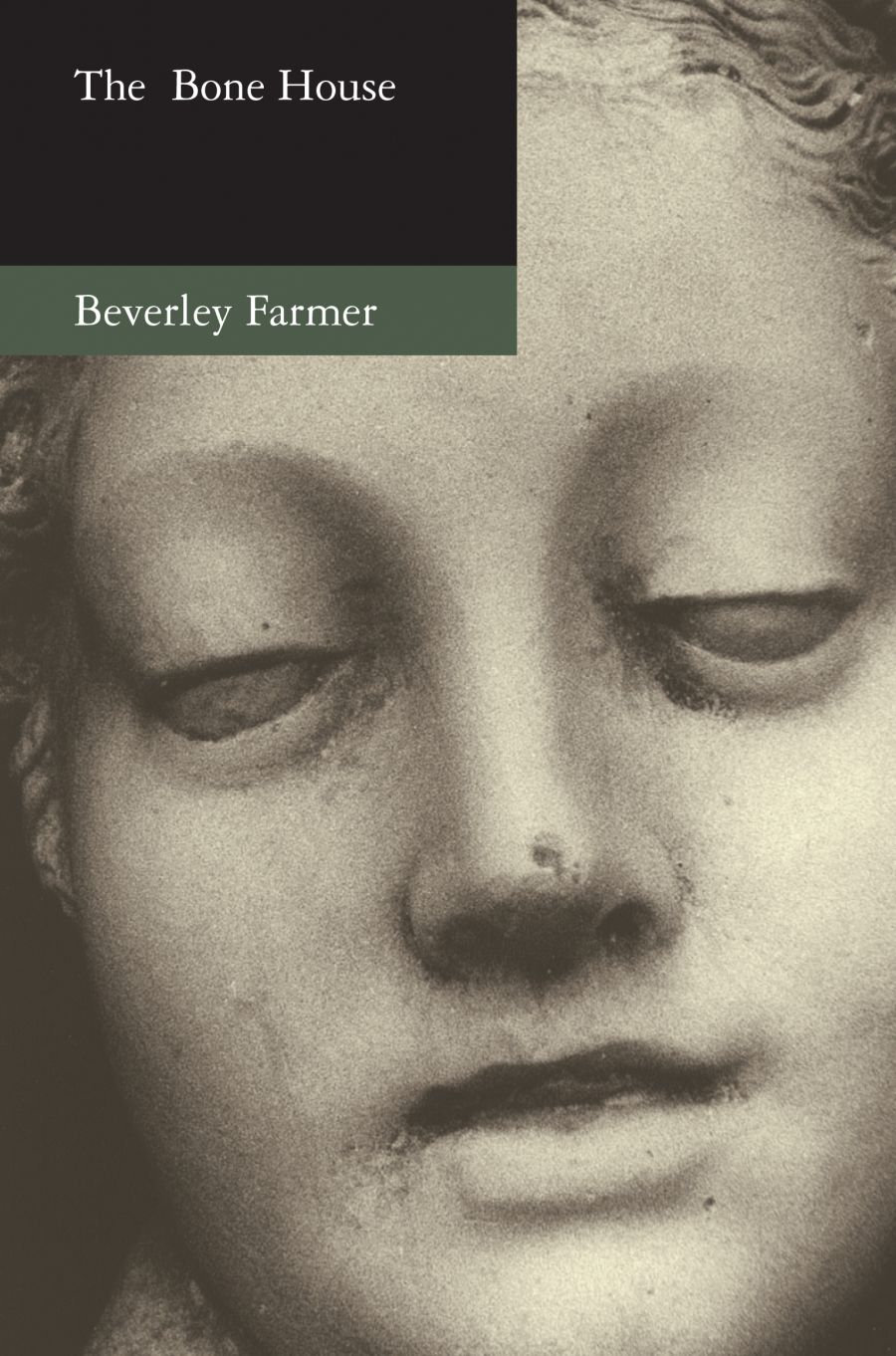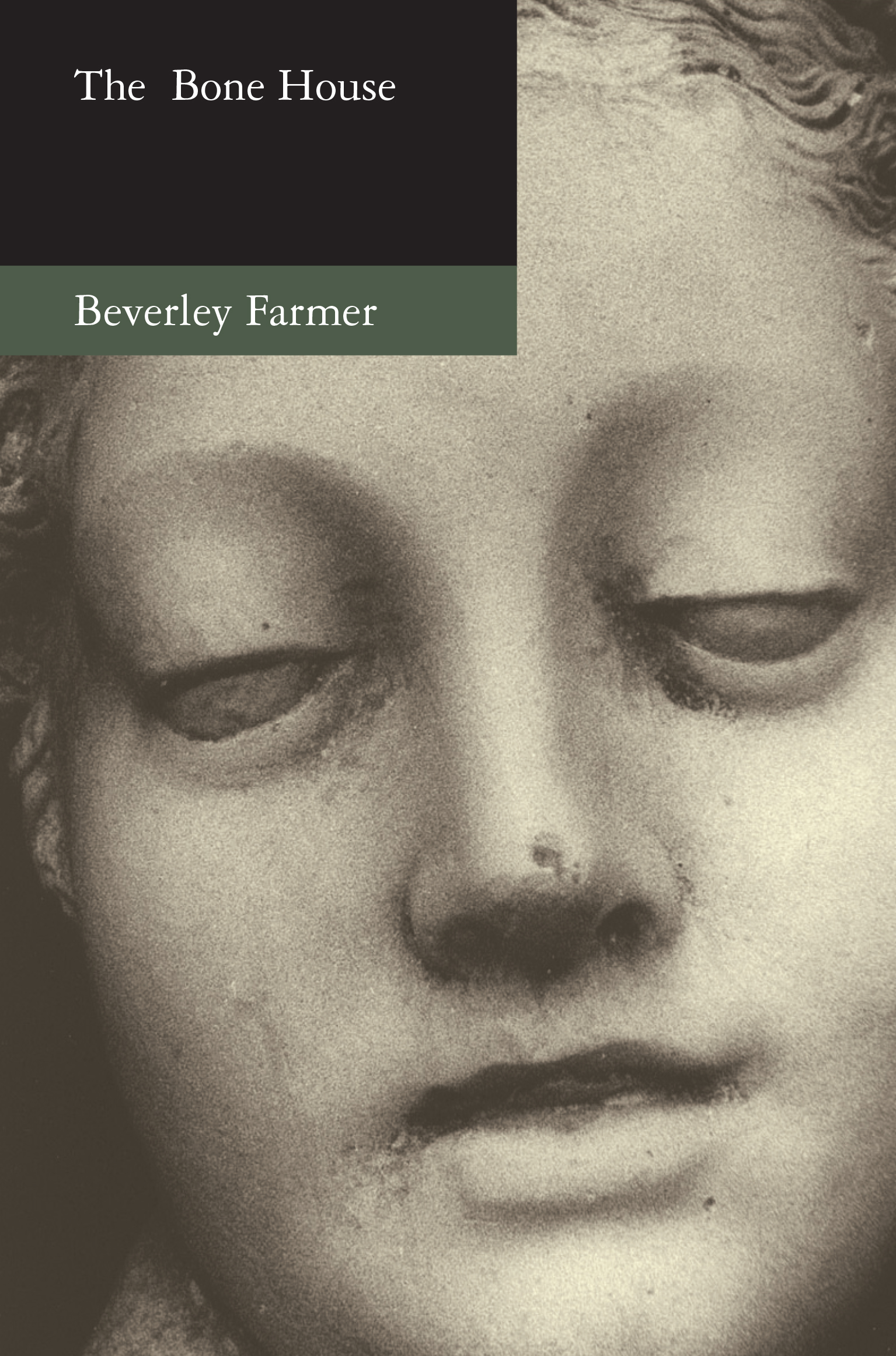
- Free Article: No
- Contents Category: Essay Collection
- Review Article: Yes
- Article Title: Taking our bearings
- Online Only: No
- Custom Highlight Text:
Slow in the writing and slow in the reading: it is so easy to drift on the tides of Beverley Farmer’s book, and also to lose your bearings. The three long essays that make up The Bone House are prose poems organised by biorhythms, it seems, rather than by any architectural design. They carry all sorts of startling images in on their tides, like the fragments the writer finds washed up on the shores: ‘A figleaf burning in a patch of sun on the path, a ribbed shell like a boat, balanced on its stalk, a crumple of brown on one side, all its freckles and veins clear in a green pool of light.’
- Book 1 Title: The Bone House
- Book 1 Subtitle: Essays
- Book 1 Biblio: Giramondo, $29.95 pb, 336 pp
- Book 1 Cover Small (400 x 600):

- Book 1 Cover (800 x 1200):

Somewhere in my studies I learned about the nutgraf, the punchy paragraph, usually second or third down, that summarises the point of the story. It must be an acronym, but I can’t find its origins. Anyway, most essays we read now, be they memoir or opinion, are nutgraf-dependent. We like to get to the point. Farmer has no truck with 75-word summaries. Her pieces shuffle and sift like a pack of tarot cards. They do not start from a contention or move to an epiphany, although they are strung with moments of revelation. Slowly, surely, her themes take place, but you may have to move away to see the shapes, as if she had built one of those pictures that you can only read from a distance.
Not every element works; sometimes the imagery is preposterously overripe or so pregnant with import that it stops me in my tracks. ‘The tawny days of autumn,’ she writes, ‘burning out by mid-afternoon’; or sometimes, carried away by her own incantation, ‘Chiaroscuro of the full eclipse of the moon, a bronze mirror damascened in its slow progression through the earth’s shadow and, yes, its light, because the earth, while blocking the sun, is refracting red sunlight from the atmosphere into the shadow cone and on to the passing moon.’ Come again? Yes, you can see why some of it has to be read twice. But it is clear that every phrase in every paragraph has been worked and revised in the ten years this book took to write. It is remarkable, considering the reach to the mythopoeic, how graceful and strange it all seems, how little is clichéd.
The Bone House is separated into three thematic sections, although many motifs recur throughout. The first section, ‘Mouths of Gold’, begins with a phone call, a car crash in another country, a funeral. But it is no narrative. Indeed, it can be difficult to tell if this is Farmer’s story at all, so often does the modern world shade into ancient myths. She unravels and recasts the myth of Kore and her daughter, death’s bride. She cites the old names for the dead, Greek and Norse, coined by grim ancestors. She unearths the ancient Greek burial practices, the mouths sealed with gold masks: ‘what were they for, these mouths?’ she wonders in the halls of an archeological museum: ‘they swim in the heat and gloom with the dense liquidity of honey, but they are finely detailed, made out of hammered sheets of soft red gold, plain or embossed with rosettes, waves, spirals, even a little ship with oars and a bellying sail, its owl eyes wide, a ship of death among the dolphins.’
But Farmer’s great gift is for making the familiar strange again. Opening the lid of the compost bin, she spies ‘a pale animal nestled inside, a ball of spun white fur, long and spangled with dew, the size of a kitten, but not moving and its body, as I peered into the silvery pelt, one raw wound’. It’s a mouldy fig. The strongest section, therefore, is the second, ‘The Seeing Eye’, a meditation on light, photography and vision that mixes myth, art and science to remarkable effect. She calls on Edvard Munch, the painter who acts as her familiar throughout these essays, on Plato, on the history of the camera lucida, on the long lost lighthouse of Alexandria, and on the lovely French names of the chemical processes used to develop negatives. She plays with an old optical illusion ‘called in Sanskrit the nimitta’. She stares hard at a segmented blood orange through the close-up filter of her camera, ‘the segments are eight boats full of bloodlit water’. Then she closes her eyes, ‘the mottle of light and dark remains, only without form or graduation, a grey inner skin out of which there slowly develops a series of radiant crystalline forms of the densest blue that well up from my field of vision, warping and fading, pulsing, sometimes forming a hole in the mass, a well, an eye, and dissolving’.
The third section, ‘Stone Age’, moves from summer to winter, from light to earth, from Greece to Norway, and beyond, to the Arctic Circle. This essay has the most straightforward narrative, beginning with the Aegean island of Thera, which exploded in a volcanic cataclysm 3600 years ago, giving birth, perhaps, to the story of Atlantis. She imagines the people of the lost Bronze Age town of Akrotiri, their stories told in frescoes that had ‘sloughed off in a shower of scales on the floor to be sealed in ash, Tefra, leaving a jigsaw puzzle of daunting complexity and fragility for their discoverers’.
From here, we move out to the Atlantic seaboard, staring at the megaliths and stone rings, with their forgotten purposes, and then to a paean on ‘the beauty of stone, great and small, and its prism of names – plutonic stone, meteoric and metamorphic stone, all the great metaphorical families of the stones, ancient names, many of them lost now along with the human worship and desire embedded in them’. In the snows of the far north, she returns to thoughts of death: Vikings full-sail, babies stillborn, an extended account of Munch’s Scream. ‘Here,’ she says, ‘death stares you in the face.’
The famous image is reprinted as a linocut here, accompanied by some of Munch’s anguished nudes and Farmer’s almost abstracted black-and-white photographs of trees and stone. Although they serve the story, I wished they could have been printed on better paper.
Perhaps the best way to read The Bone House is one paragraph a day, perhaps aloud, taking time to reflect on it or reject it, abandoning any plan to absorb it whole.
‘We take our bearings as we go,’ writes Farmer. ‘A journey may turn into a pilgrimage before we know it, a spirit journey alongside that of the everyday restless body, and end up fused with other journeys, remembered, or only imagined, dreamt of, in multiple exposures, shifting over-tones, nostalgias for places we have never been.’


Comments powered by CComment